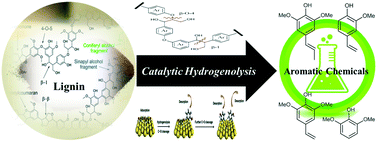State-of-the-art catalytic hydrogenolysis of lignin for the production of aromatic chemicals
Abstract
Solvolysis is one of the promising methods to convert lignin to different kinds of value-added aromatic chemicals in the solvent, sometimes employing a catalytic system and hydrogen. The process involving the cracking of the lignin macromolecule and repolymerization of the produced fragments is influenced by the heating method, experimental conditions, presence of catalyst, and solvent species. The inter-unit linkages in lignin can be selectively cleaved with the addition of the designed catalyst, facilitating the formation of the aromatic compounds. A favorable solvent system could improve the yield of specific aromatic compounds and inhibit the formation of polymerized compounds. This work aimed to provide a comprehensive review on lignin hydrogenolysis concerning the effect of the catalyst and solvent on the cleavage mechanism of typical inter-unit linkages and on the final product distribution. The limitations and forward routes for this area are addressed in order to emphasize the requirement for understanding the lignin hydrogenlitic depolymerization process for the production of aromatic platform chemicals.



 Please wait while we load your content...
Please wait while we load your content...